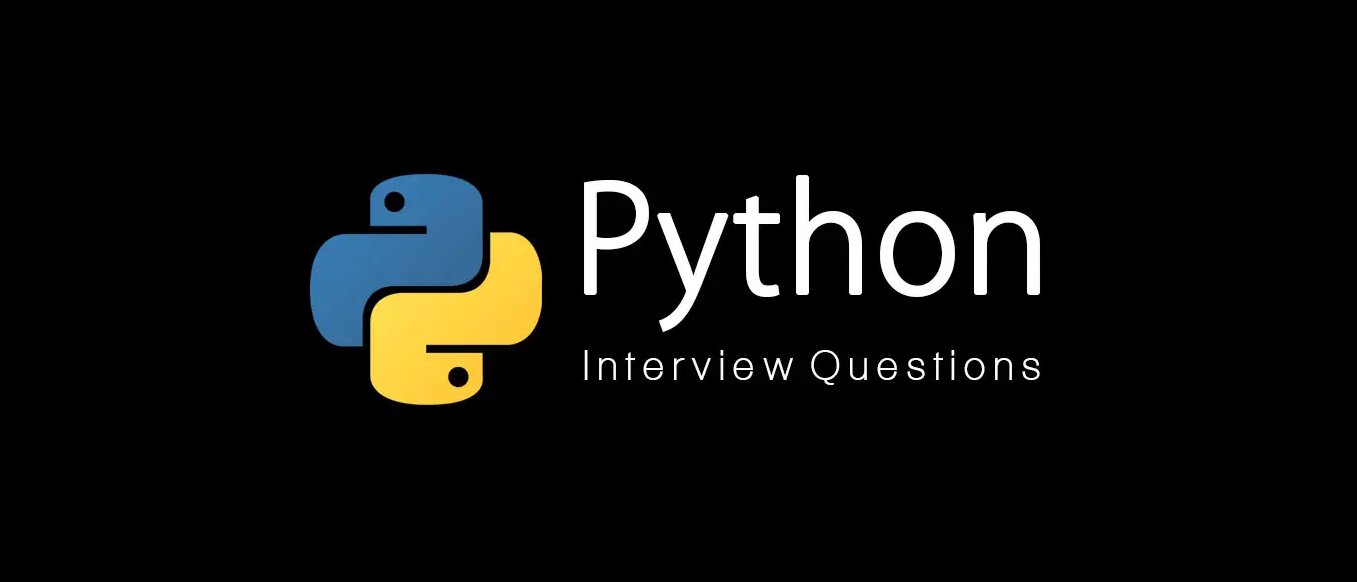Introduction:
Python has established itself as one of the most popular programming languages in the world. Its versatility, simplicity, and wide range of applications make it a favourite among developers, leading to a high demand for Python skills in the job market. If you’re preparing for a Python interview, it’s crucial to be well-versed in both the fundamentals and advanced concepts of the language. To help you succeed, we’ve compiled a comprehensive list of the top 50+ Python interview questions and answers for 2024.
Basic Interview Question for Python
- What is Python?
Python is a high-level, interpreted programming language known for its simplicity and readability. It emphasizes code readability and allows programmers to express concepts in fewer lines of code compared to other languages. - What are the key features of Python?
Python’s key features include simplicity, readability, versatility, ease of learning, extensive standard library, and high-level dynamic data types. - Differentiate between Python 2.x and Python 3.x.
Python 2.x is legacy and will no longer receive official support after 2020. Python 3.x is the current version and offers several improvements over Python 2.x, including better Unicode support, cleaner syntax, and other language enhancements. - Explain Python namespaces.
A namespace is a mapping from names to objects. In Python, namespaces are implemented as dictionaries. They help avoid naming conflicts and provide a way to organize variables, functions, and other objects. - What is PEP 8?
PEP 8 is the Python Enhancement Proposal that provides guidelines for writing clean, readable code. It covers topics such as naming conventions, indentation, spacing, and code layout. - What are decorators in Python?
Decorators are a powerful feature in Python that allows you to modify the behavior of functions or methods. They are typically used to add functionality to existing functions without modifying their code directly. - Explain the difference between ‘==’ and ‘is’ in Python.
The ‘==’ operator compares the values of two objects, while the ‘is’ operator checks if two objects refer to the same memory location. - What is a lambda function in Python?
A lambda function is a small, anonymous function defined using the lambda keyword. It can take any number of arguments but can only have one expression. - What are generators in Python?
Generators are a type of iterable that allows you to generate values on the fly. They use the yield keyword to return values one at a time, saving memory and improving performance. - Explain the use of *args and **kwargs in Python function definitions.
*args and **kwargs are used to pass a variable number of arguments to a function. *args collects positional arguments into a tuple, while **kwargs collects keyword arguments into a dictionary. - What is the purpose of the init() method in Python classes?
The init() method is a special method in Python classes that is called when a new instance of the class is created. It is used to initialize the object’s state. - How do you handle exceptions in Python?
Exceptions in Python are handled using try, except, and finally blocks. Code that may raise an exception is placed inside the try block, and code to handle the exception is placed inside the except block. The final block is optional and is used to execute code whether an exception occurs or not. - What is the difference between lists and tuples in Python?
Lists and tuples are both ordered collections of items, but lists are mutable (can be changed) while tuples are immutable (cannot be changed). - Explain the use of the ‘with’ statement in Python.
The ‘with’ statement in Python is used to simplify exception handling and resource management. It ensures that a context manager’s enter() and exit() methods are properly called, even if an exception occurs. - What are the different methods of string formatting in Python?
Python supports several methods of string formatting, including the %-formatting, str.format(), and f-strings (introduced in Python 3.6). - What is the difference between ‘append()’ and ‘extend()’ methods in Python lists?
The ‘append()’ method adds a single element to the end of a list, while the ‘extend()’ method adds multiple elements (as iterable) to the end of a list. - Explain the use of Python’s ‘map()’ function.
The ‘map()’ function in Python applies a given function to each item of an iterable (such as a list) and returns a new iterable containing the results. - What are Python dictionaries?
Dictionaries in Python are unordered collections of key-value pairs. They are mutable and can store any type of data. - What is the purpose of the ‘pass’ statement in Python?
The ‘pass’ statement in Python is a null operation that does nothing. It is used as a placeholder where syntactically required but no code needs to be executed. - How do you create a virtual environment in Python?
You can create a virtual environment in Python using the ‘venv’ module. Simply navigate to the desired directory and run ‘python3 -m venv myenv’ to create a virtual environment named ‘myenv’. - What is the purpose of the ‘main’ function in Python scripts?
The ‘main‘ function in Python scripts serves as the entry point when the script is executed as the main program. It allows you to define code that should only run when the script is executed directly, not when it is imported as a module. - Explain the use of Python’s ‘pickle’ module.
The ‘pickle’ module in Python is used for serializing and deserializing Python objects. It can convert complex objects into a byte stream, which can then be saved to a file or transmitted over a network. - How do you handle file I/O in Python?
File I/O in Python is handled using the ‘open()’ function to open files in different modes (read, write, append, etc.). Once a file is opened, you can read from or write to it using methods like read(), readline(), write(), etc. - What are list comprehensions in Python?
List comprehensions are a concise way to create lists in Python. They allow you to generate lists using a single line of code by iterating over an iterable and applying an expression to each item. - What is the purpose of the ‘slots’ attribute in Python classes?
The ‘slots‘ attribute in Python classes is used to optimize memory usage by declaring a fixed set of instance attributes. It prevents the creation of a dict for each instance, saving memory. - Explain the difference between ‘iterable’ and ‘iterator’ in Python.
An iterable is any object that can be looped over (e.g., lists, tuples, strings), while an iterator is an object that provides the next value in a sequence using the next() method. - What is the purpose of the ‘super()’ function in Python?
The ‘super()’ function in Python is used to call methods of a superclass from a subclass. It allows you to invoke methods of the superclass without explicitly naming the superclass. - What is the Global Interpreter Lock (GIL) in Python?
The Global Interpreter Lock (GIL) in Python is a mutex that protects access to Python objects, preventing multiple threads from executing Python bytecode simultaneously. This can limit the performance of multi-threaded Python programs. - How do you perform multi-threading in Python?
Multi-threading in Python can be done using the ‘threading’ module, which provides a high-level interface for creating and managing threads. However, due to the GIL, multi-threading may not always result in performance improvements for CPU-bound tasks. - What are context managers in Python?
Context managers in Python are objects that are used with the ‘with’ statement to manage resources (such as files or database connections). They implement the enter() and exit() methods, which are called when entering and exiting the ‘with’ block, respectively.
In-Depth Interview Questions for Python
- Explain the concept of metaclasses in Python.
Answer: Metaclasses in Python are classes that define the behaviour of other classes. They are responsible for creating classes dynamically at runtime. By defining a metaclass, you can customize class creation and modify the behaviour of class instances. - How does Python’s garbage collection work, and what are its limitations?
Answer: Python uses a garbage collector to automatically reclaim memory occupied by objects that are no longer in use. It works by periodically identifying and deallocating unreachable objects. However, Python’s garbage collection has limitations, such as the inability to collect reference cycles involving objects that reference each other circularly. - What are the differences between shallow copy and deep copy in Python?
Answer: Shallow copy creates a new object but does not recursively copy the contents of nested objects. It only copies the references to the original objects. Deep copy, on the other hand, creates a new object and recursively copies the contents of nested objects, ensuring that the copied object is fully independent of the original. - Discuss the Global Interpreter Lock (GIL) in Python and its implications for multi-threading.
Answer: The Global Interpreter Lock (GIL) is a mutex that prevents multiple native threads from executing Python bytecode simultaneously in a single process. This means that Python threads cannot fully utilize multiple CPU cores for CPU-bound tasks. However, the GIL does not prevent threads from running concurrently for I/O-bound tasks, as they release the GIL during I/O operations. - How would you implement a singleton pattern in Python?
Answer: In Python, you can implement a singleton pattern by creating a class with a private constructor and a static method to return the single instance of the class. You can also use a module-level variable to store the singleton instance, ensuring that only one instance of the class exists throughout the program. - Explain the differences between the ‘asyncio’ module and threading for concurrent programming in Python.
Answer: The ‘asyncio’ module in Python provides a high-level interface for writing asynchronous code using coroutines and event loops. It is suitable for I/O-bound tasks and can handle thousands of concurrent connections efficiently. Threading, on the other hand, is suitable for CPU-bound tasks but is limited by the Global Interpreter Lock (GIL) and may not provide significant performance improvements for CPU-bound tasks. - What is method resolution order (MRO) in Python, and how does it work in multiple inheritance? Answer: Method resolution order (MRO) in Python defines the order in which methods are resolved in the presence of multiple inheritance. It follows the C3 linearization algorithm, which ensures that the base classes are searched in a consistent and predictable order. MRO is computed using the C3 superclass linearization algorithm, which preserves the order of classes and resolves diamond inheritance conflicts.
- Discuss the differences between the ‘iter()’ and ‘next()’ functions in Python.
Answer: The ‘iter()’ function in Python returns an iterator object for an iterable, allowing you to iterate over its elements using the ‘next()’ function. The ‘next()’ function retrieves the next item from an iterator. When all items have been exhausted, it raises a ‘StopIteration’ exception. The ‘iter()’ function is typically used implicitly in ‘for’ loops to create iterators. - How would you implement memoization in Python, and what are its advantages?
Answer: Memoization is a technique used to cache the results of expensive function calls and reuse them when the same inputs occur again. In Python, you can implement memoization using decorators or by creating a memoization cache using dictionaries. Memoization can significantly improve the performance of recursive or repetitive function calls by avoiding redundant computations. - Explain the differences between list comprehension and generator expression in Python.
Answer: List comprehension in Python is a concise way to create lists by applying an expression to each item in an iterable. It eagerly evaluates the entire list and returns a new list object. Generator expressions, on the other hand, are lazy evaluated and produce a generator object that generates values one at a time as needed. They are memory-efficient and suitable for processing large datasets without loading them entirely into memory.





